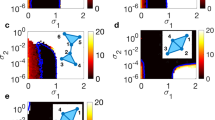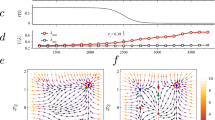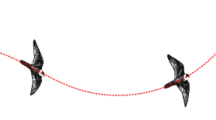Abstract
MANY systems being studied today are dynamic, large and complex: traffic at an airport with 100 planes, slum areas with 104 persons or the human brain with 1010 neurones. In such systems, stability is of central importance, for instability usually appears as a self-generating catastrophe. Unfortunately, present theoretical knowledge of stability in large systems is meagre: the work described here was intended to add to it.
This is a preview of subscription content, access via your institution
Access options
Subscribe to this journal
Receive 51 print issues and online access
$199.00 per year
only $3.90 per issue
Buy this article
- Purchase on SpringerLink
- Instant access to full article PDF
Prices may be subject to local taxes which are calculated during checkout
Similar content being viewed by others
References
Ashby, W. R., Design for a Brain (Chapman and Hall, London, 1952).
Gardner, M. R., Critical Degenerateness in Linear Systems, Tech. Rep. No. 5.8 (Biological Computer Laboratory, University of Illinois, Urbana,Illinois 61801, 1968).
Author information
Authors and Affiliations
Rights and permissions
About this article
Cite this article
GARDNER, M., ASHBY, W. Connectance of Large Dynamic (Cybernetic) Systems: Critical Values for Stability. Nature 228, 784 (1970). https://doi.org/10.1038/228784a0
Received:
Issue date:
DOI: https://doi.org/10.1038/228784a0
This article is cited by
-
Stabilization through self-coupling in networks of small-world and scale-free topology
Scientific Reports (2023)
-
Predicting ecosystem changes by a new model of ecosystem evolution
Scientific Reports (2023)
-
Feasibility in MacArthur’s consumer-resource model
Theoretical Ecology (2023)
-
Coupling strength between omnivory loops and their one-species-delete subloops drives real food web stability
Theoretical Ecology (2023)
-
Feasibility of sparse large Lotka-Volterra ecosystems
Journal of Mathematical Biology (2022)



